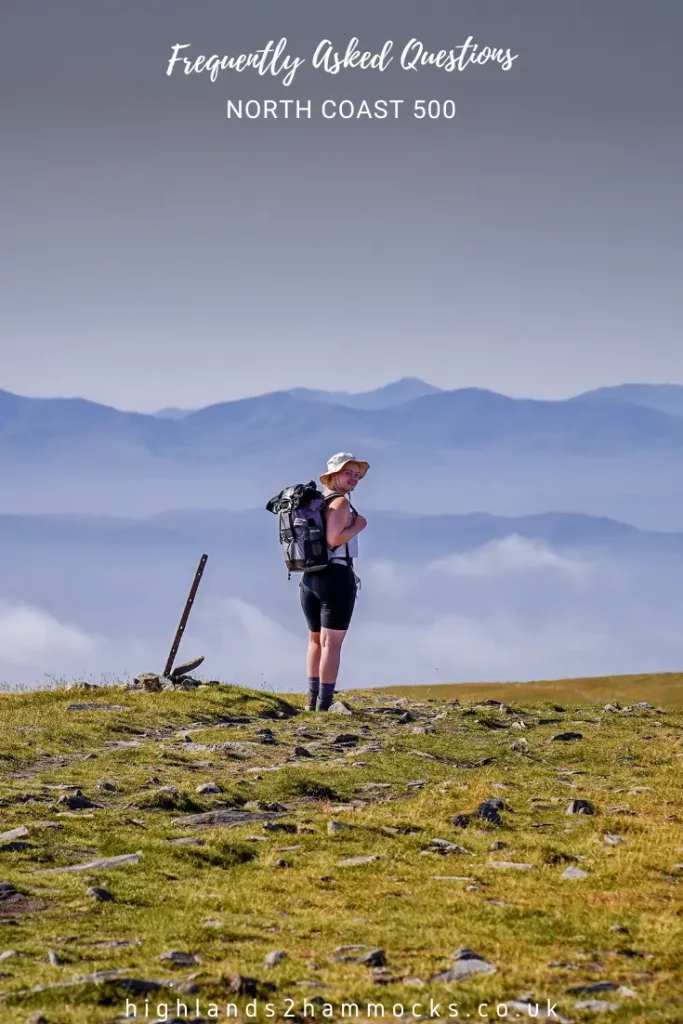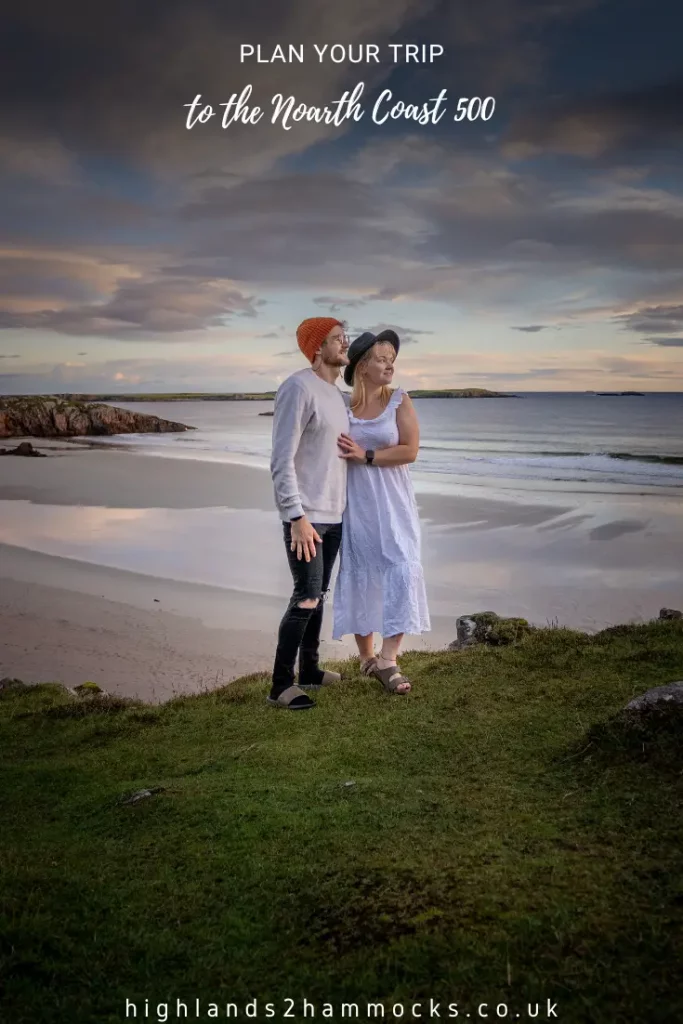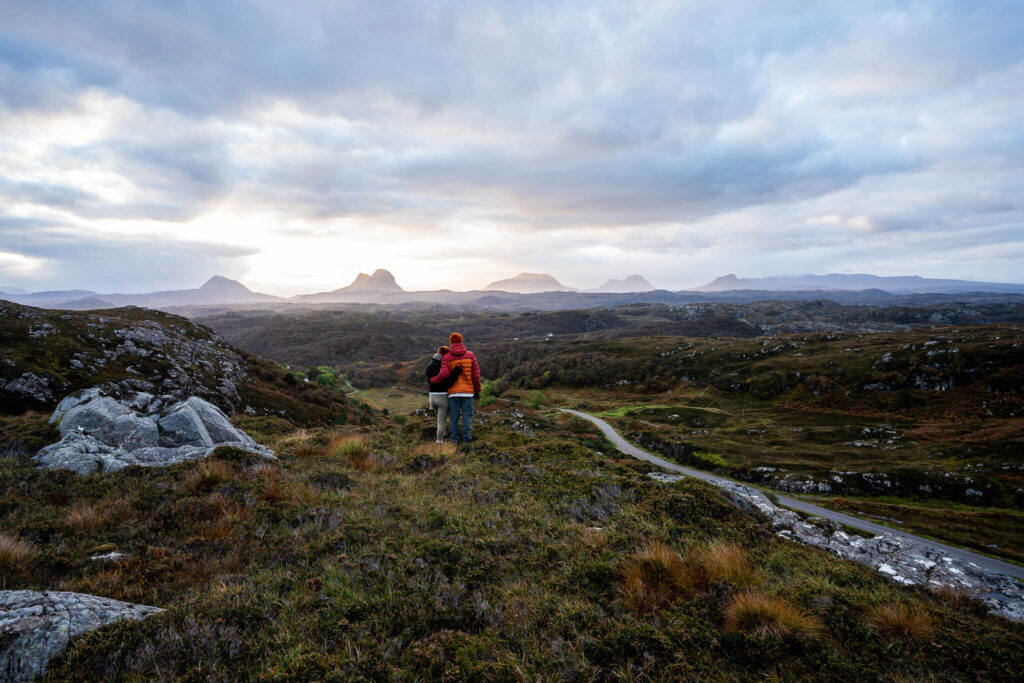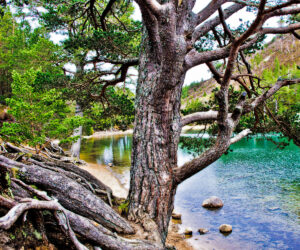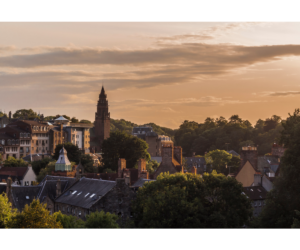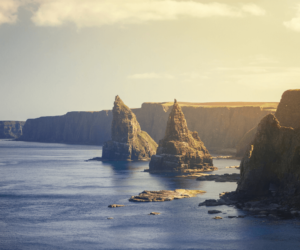The North Coast 500 is a scenic road trip route that takes you on a 500-mile journey through the stunning Scottish Highlands. This journey offers some of the most spectacular coastal scenery, quaint towns, and historic castles along the way. It is a popular destination for travelers who enjoy nature, adventure, and exploring new places.
The North Coast 500 starts and ends in the city of Inverness, which is the gateway to the Scottish Highlands. From there, you’ll travel north along the coast, passing through small villages and towns like Ullapool, Durness, and John o’ Groats.
One of the highlights of the North Coast 500 is the breathtaking scenery. You’ll drive past rugged coastlines, white sandy beaches, and majestic mountains. The Scottish Highlands are also home to an abundance of wildlife, including deer, otters, seals, and a variety of birdlife. It’s not uncommon to spot dolphins and whales in the waters off the coast.
Along the way, there are many places to stop and explore. Castles like Dunrobin and Castle of Mey offer a glimpse into Scotland’s rich history, while the Smoo Cave and the Bone Caves of Inchnadamph showcase the area’s geological wonders. Outdoor enthusiasts will enjoy hiking in the Assynt and Torridon mountain ranges or kayaking along the coast.
The North Coast 500 also offers plenty of opportunities to sample Scottish cuisine, such as fresh seafood and traditional dishes like haggis and neeps. There are also several distilleries along the route where you can sample some of Scotland’s famous single malt whiskies.
Overall, the North Coast 500 is an unforgettable road trip experience. It offers stunning scenery, rich history, and a chance to immerse yourself in Scottish culture. It’s no wonder why it has become such a popular destination for travelers from all over the world.
No time to read now? No problem, save a pin to your Pinterest board for later!

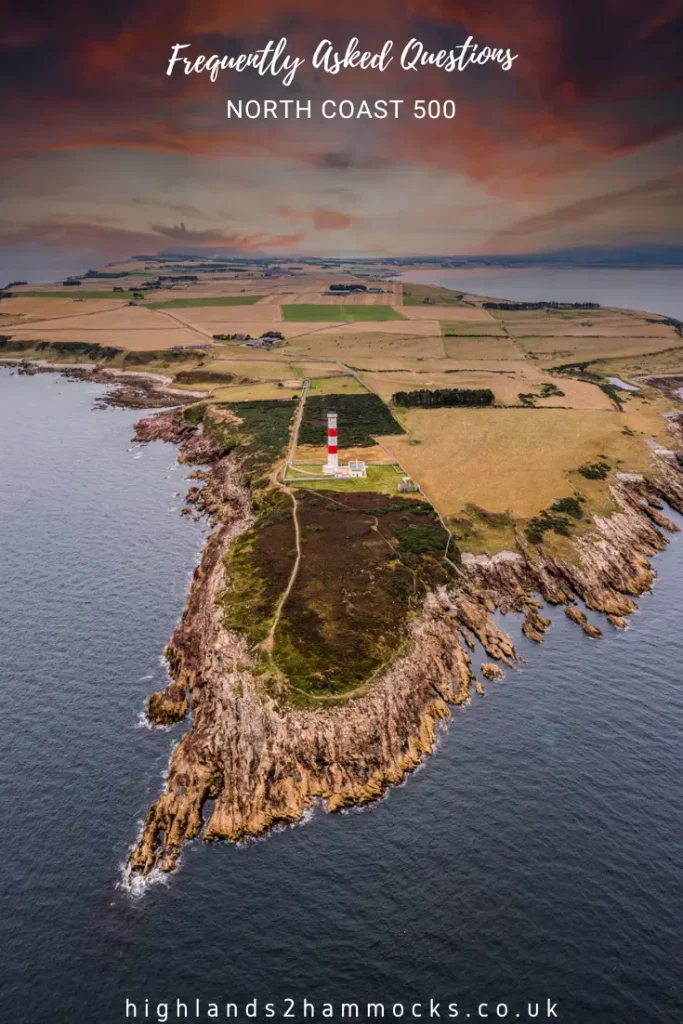
North Coast 500 FAQ’s
Table of Contents
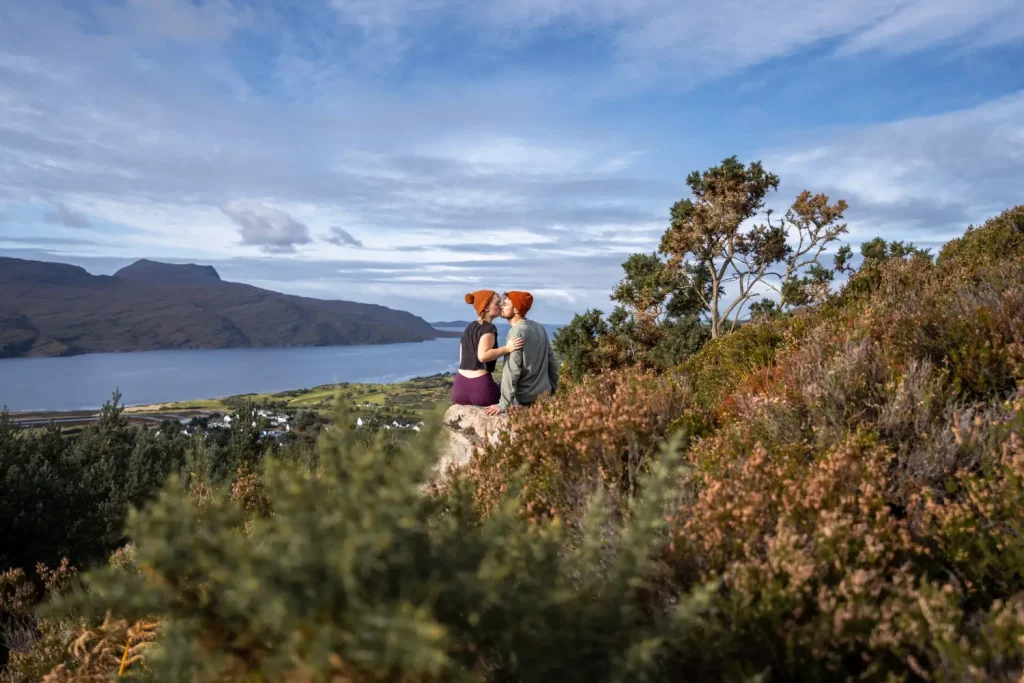
Where to Stay on the North Coast 500
There is a wide range of accommodations around the NC500 route, so you will not be short on options. Depending on how long you are spending in each area will depend on how long you spend in that location. It is worth bearing in mind that some accommodations will require you to stay a minimum number of nights so it is worth researching this when you are planning your North Coast 500 itinerary.
Our new book North Coast 500 Where to Eat and Stay shares the best places to eat and stay around the NC500 and includes whether places are dog friendly, accessible, have wifi and EVC and whether they cater to dietary requirements. Paired with our Destination NC500 guidebook you will have the perfect combo to start planning your roadtrip of a lifetime.
The remoteness in the highlands of Scotland will leave you with little choice of accommodation in each location along the NC500, however, there are still enough options to choose from to ensure a comfortable trip. These are mostly in the shape of B&Bs, Airbnbs, converted cottages and other quirky accommodations.
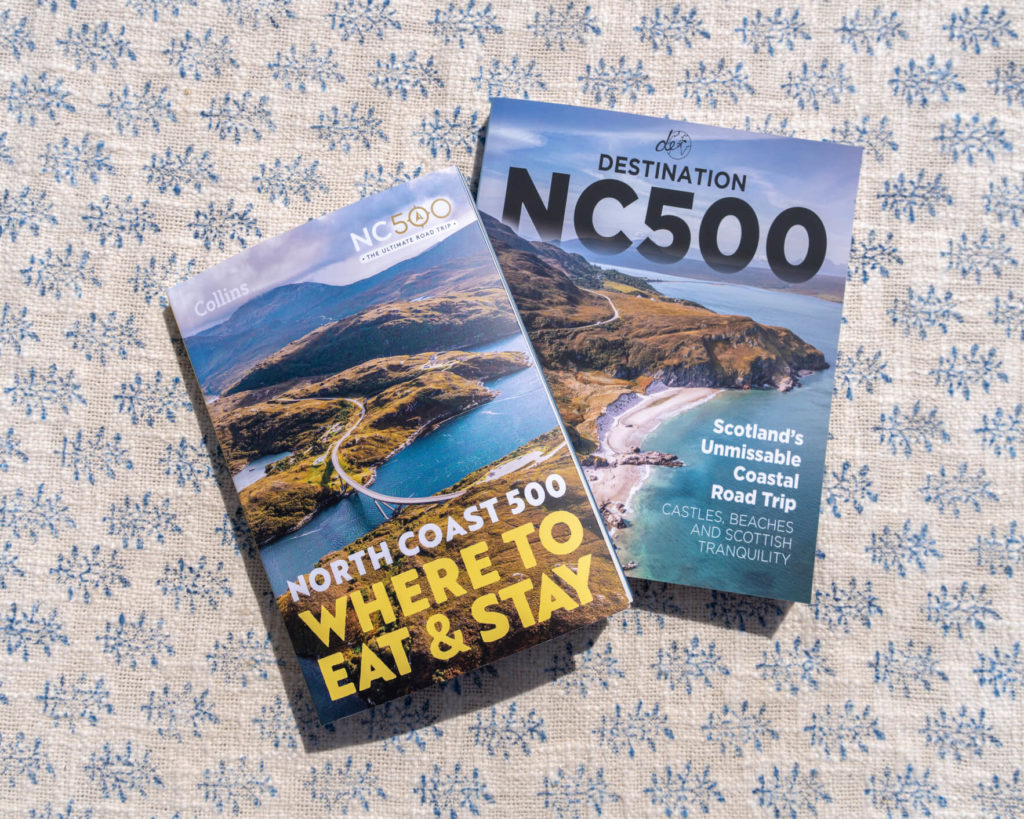
Planning Your Trip
We use the below booking platforms to plan our trips. We hope you find them useful too!
How long does it take to drive the North Coast 500?
The time it takes to complete the North Coast 500 depends on how much time you have and how many stops you plan to make along the way. The route can be completed in as little as 3 days, but many people prefer to take 5-7 days to fully explore the area. We would personally recommend 7-14 days to really make the most of your time in this remote part of the country. There is so much to see in addition to the main sights on the coastal area of the route, you just need to have the time to see them.
Is the North Coast 500 easy to drive?
The North Coast 500 route can be challenging for some drivers, especially those who are not used to driving on narrow, winding roads. The road can be narrow at certain points, and there are many sharp turns and steep inclines. Additionally, there are often large vehicles such as buses and campervans on the road, which can be intimidating for some drivers, especially if you are driving a larger vehicle as well.
However, with caution and careful planning, the North Coast 500 can be an enjoyable and safe driving experience. It’s important to take your time, obey traffic laws, and be mindful of other drivers on the road. Use the passing places to pull in and let other drivers past if you are enjoying a scenic drive and pay attention to your nearest passing place on the single track roads.
It’s also important to note that some sections of the North Coast 500 can be challenging during adverse weather conditions, such as heavy rain, strong winds, or snow. We would advise checking the weather forecast before setting off on your trip to ensure you are prepared for the weather.
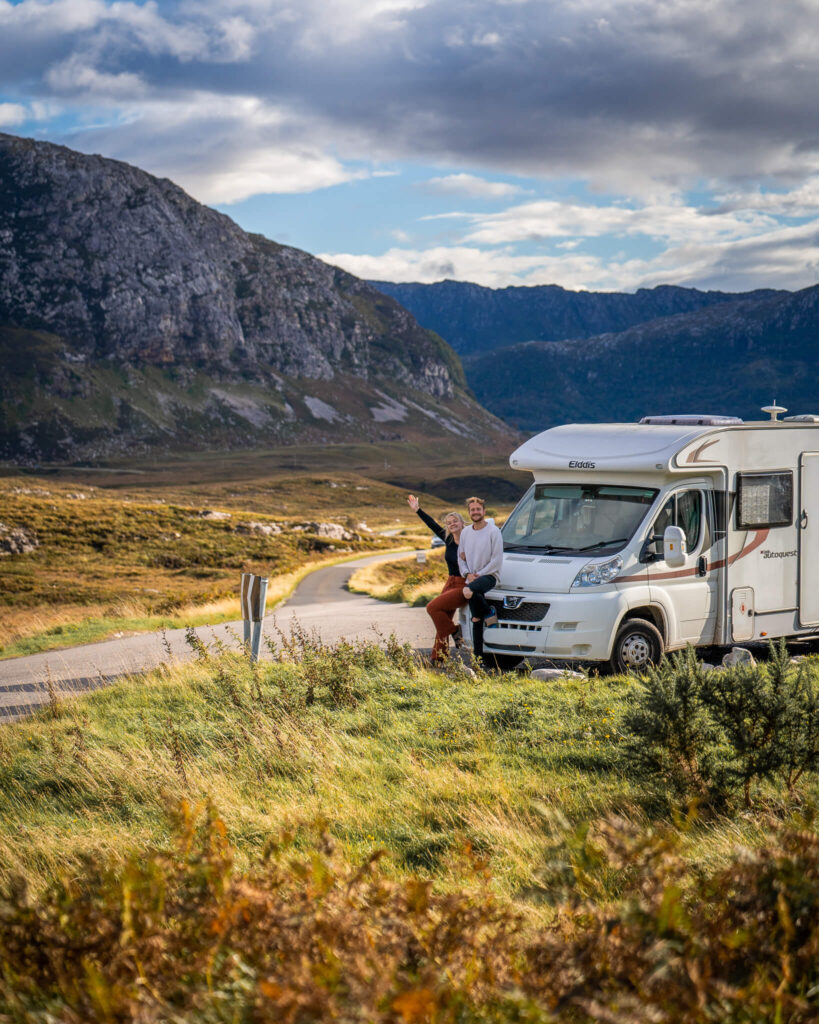
What is the best time of year to do the North Coast 500?
In our opinion, the best time of year to drive the North Coast 500 is during the Spring or Autumn months. The chances of the midges being out is less likely and there will be a better chance of some dry weather than during the winter months.
In saying that, visiting the North Coast 500 during the summer, the weather is generally mild and the days are longer. However, keep in mind that this is also the busiest time of year, so you may encounter more crowds and higher prices.
In winter, a lot of accommodation and attractions on the North Coast 500 are closed. If there is a clear weather window however, this can be a beautiful and quiet time of year to visit the northern highlands.
Do I need a special type of vehicle to do the North Coast 500?
While a 4×4 vehicle is recommended for some of the more remote parts of the route, it is not necessary to have one. Most of the roads are suitable for a regular car, but be prepared for some narrow and winding roads.

Where can I find accommodations along the North Coast 500?
There are plenty of accommodations along the North Coast 500, including hotels, bed and breakfasts, glamping and campsites. However, it’s recommended to book ahead, especially during the busy summer months.
Some of our favourite places to stay include

ORDER DESTINATION NC500 TODAY – 20% off!
Plan your trip to the North Coast 500 like never before and enjoy a road trip around the most scenic landscape in the world.
Containing details on
– All of the best sights (100+)
– Where to eat and stay
– Campervan facilities (water points and waste disposal)
– Sample itineraries
and so much more!
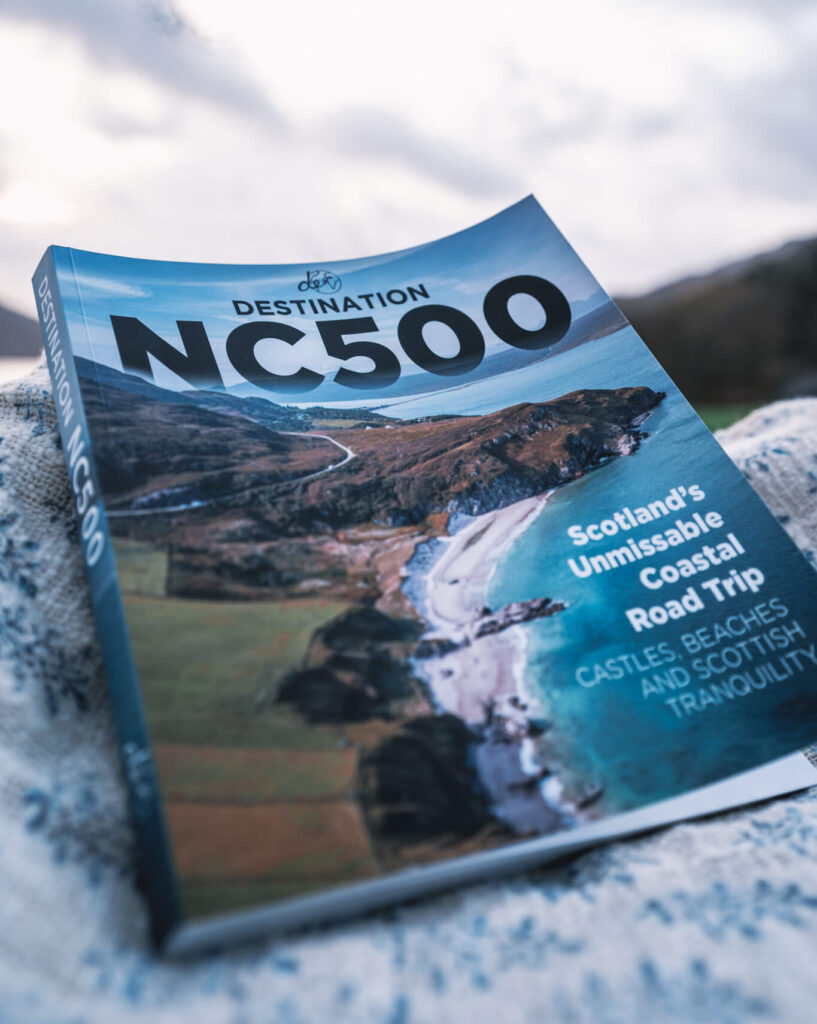
Can you wild camp on the North Coast 500?
This is a very common question asked by those who are visiting Scotland. There are many campsites along the North Coast 500 which is ideal if you are looking for something near your car and with a toilet and shower block. There are also many beautiful and remote areas where you can wild camp on the NC500.
So in short, yes, you can wild camp on the North Coast 500, however, there are guidelines to follow to ensure that this is done respectfully and without disrupting the local area.
The Scottish Outdoor Access Code (SOC) is a code of practice to ensure that Scotland’s public spaces are enjoyed in a responsible manner. It aims to protect the natural environment and places of special scientific interest, such as national parks and wilderness areas, from damage caused by irresponsible visitors. Leave no trace and take nothing but what you need for your journey.
Before setting off on your trip, make sure you are familiar with the SOC and have the correct equipment for the weather conditions. It is important to note that you need to camp in a remote area away from houses and towns.
Do you need to book campsites on the NC500?
It is highly recommended to book campsites in advance while traveling on the North Coast 500. During peak seasons, campsites can get very busy, and availability can be limited. Booking in advance will ensure that you have a place to stay and won’t be left without a place to rest your head for the night. It will also allow you to plan your route and schedule better, so you can enjoy your trip without any unnecessary stress. Some campsites may have restrictions on the size of motorhomes or caravans, so it’s essential to check the specifications before booking.
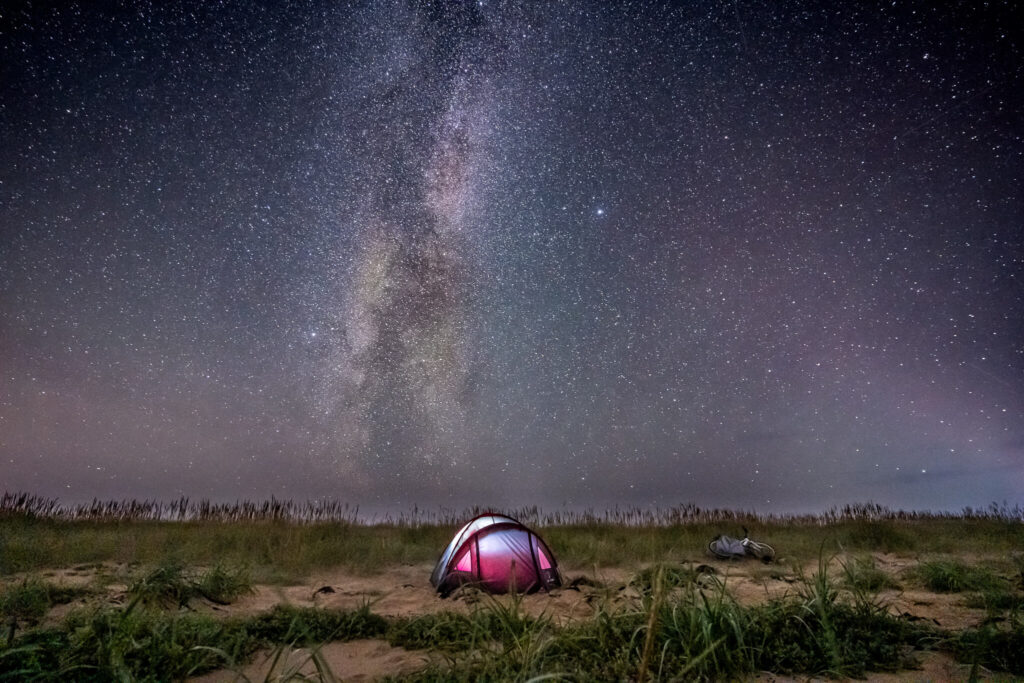
What is the hardest part of the North Coast 500?
The NC500 is made up of some very challenging roads, especially if you are not used to driving on single-track roads or steep mountain passes. The route has been designed so that it can be driven in either direction, but there are a few sections that are particularly challenging.
Bealach na Ba Pass is a popular stretch of the North Coast 500 route located in the Scottish Highlands. It is one of the most scenic and challenging parts of the entire journey. This stretch of narrow, steep and winding road requires a lot of skill, patience, and concentration to navigate as it winds up the mountain.
The road takes drivers up to an altitude of over 2,000 feet above sea level, offering stunning panoramic views of the surrounding landscape.
The road is very narrow and you must be prepared to meet oncoming traffic as the road can be very busy. Due to this, it is advised, that larger vehicles avoid this road and take the northern route to Applecross. We would also advise driving this road first thing in the morning or last thing in the evening when it is quieter.
In addition to the narrow and steep road, the Bealach na Ba pass is also subject to severe weather conditions. The area is known for its unpredictable and harsh weather, with strong winds and heavy rain being common occurrences. Drivers must be extra cautious when navigating the pass in these conditions.
The pass can also be intimidating for those who are not experienced with driving on narrow and winding roads. The steep inclines and declines can be nerve-wracking, especially for those who are not used to driving in mountainous areas.
Despite its challenges, the Bealach na Ba pass is an incredible driving experience offering breathtaking views of the surrounding Scottish Highlands.
However, drivers should take their time and exercise caution when navigating the pass, especially during bad weather conditions.
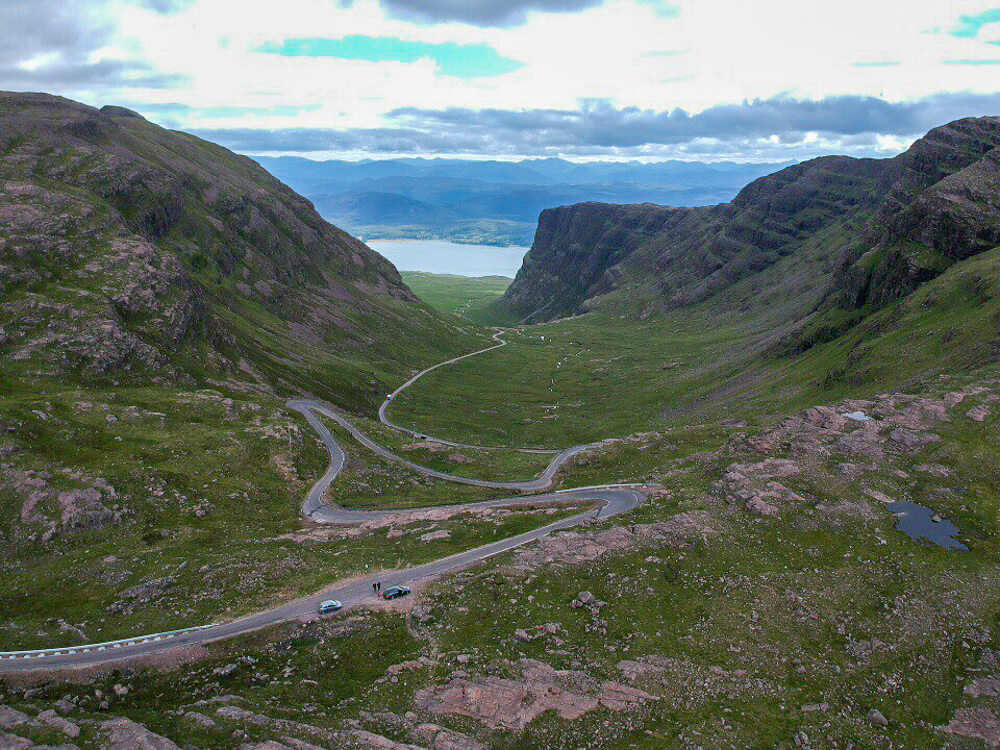
What is the most beautiful part of the North Coast 500?
The west coast of the North Coast 500 is home to some of the most stunning and picturesque scenery in Scotland. With dramatic coastlines, towering mountains, and shimmering lochs, it is hard to pinpoint just one area as the most beautiful.
One of the most breathtaking areas on the west coast is undoubtedly Applecross, located just beyond the Bealach na Ba pass. The road leading to Applecross is a winding, single-track road that is not for the faint-hearted, but once you arrive, you’ll be rewarded with panoramic views of the surrounding mountains and seascape. The village of Applecross itself is small and quaint, with a handful of restaurants and pubs serving up fresh food and local ales.
Torridon is often considered the most beautiful part of the North Coast 500 due to its dramatic scenery and rugged landscape. It is situated on the west coast of Scotland, and the area is known for its towering mountains, crystal-clear lochs, and stunning hiking trails. The drive through Torridon is breathtaking, with winding roads that offer stunning views of the surrounding mountains and waterfalls. However, depending on when you visit, this road can take you a long time to drive along due to the amount of traffic piling along the single-track road.
Achmelvich Beach is another one of the most beautiful areas on the North Coast 500. The beaches here are remote and surrounded by green hills with white sand and the clearest blue water.
No matter where you go along the North Coast 500, specifically on the raw and rugged west coast, you’re sure to be greeted with awe-inspiring scenery that will take your breath away.
Is it better to do the NC500 clockwise or anticlockwise?
In our opinion, it is best to drive the NC500 in an anticlockwise direction. This is our preference as we love the drive south down the west of Scotland as the scenery just gets better and better. In saying that, if you travel in a clockwise direction, you will be less likely to be stuck behind traffic.
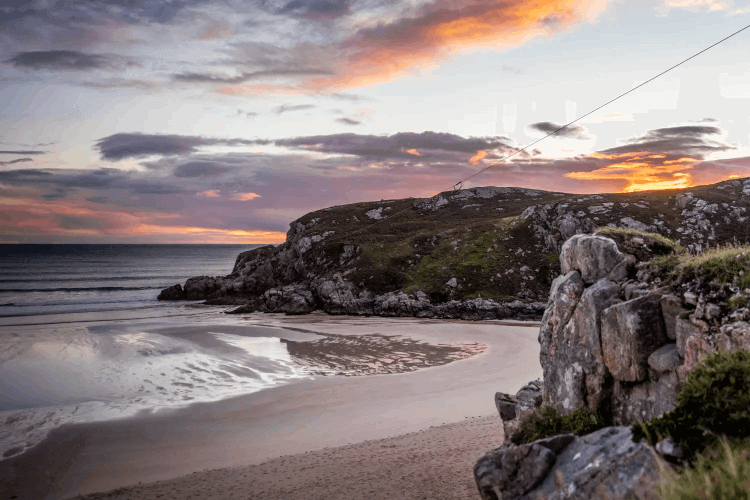
What is the best beach on the NC500?
There are many beautiful beaches on the NC500, but the best beach is arguably Sandwood Bay. Located in the far northwest of Scotland, Sandwood Bay is a remote and wild stretch of sand backed by towering cliffs and dunes. The beach is only accessible by foot, but the stunning coastal walk is well worth the effort.
The beach is a mile long, and the sand is soft and golden. The turquoise water is clean and clear, making it an ideal spot for a swim.
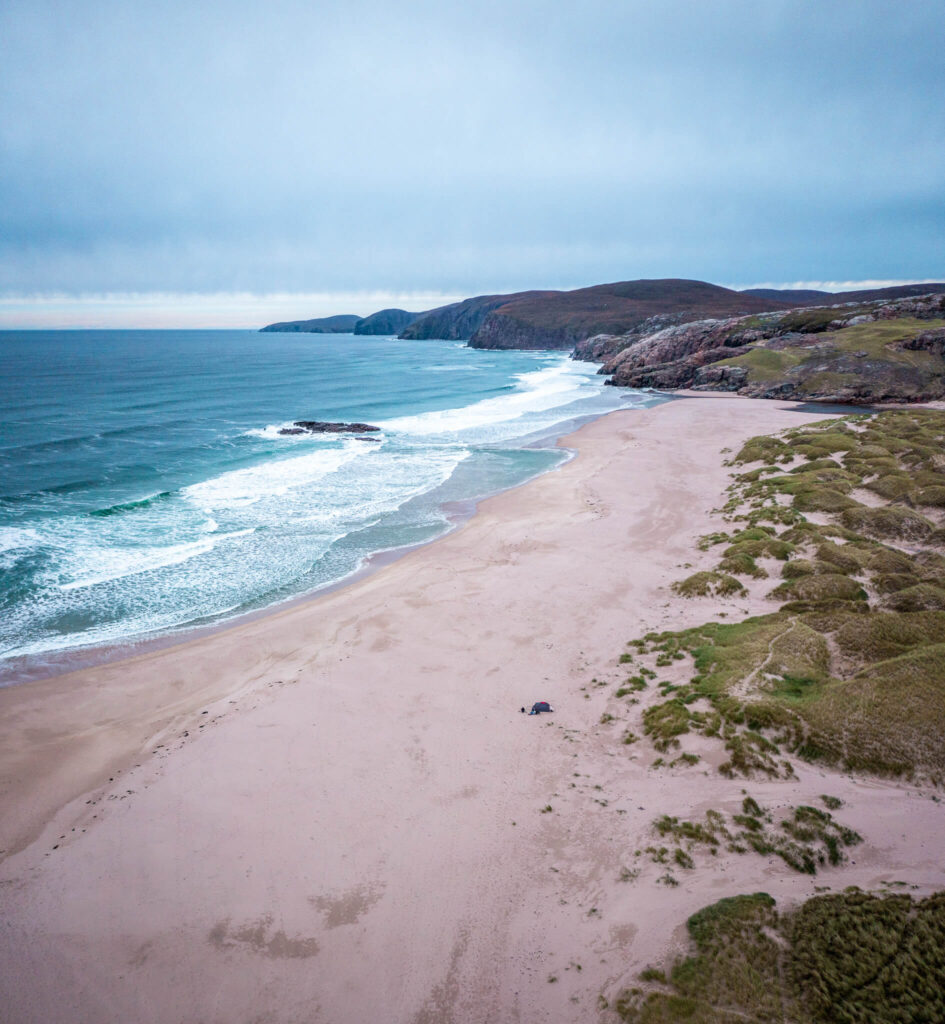
How do you avoid midges on the NC500?
Midges are tiny flying insects that can be a nuisance to people visiting the Scottish Highlands, especially during the summer months. They are prevalent in damp and humid conditions, and their bites can cause severe itching and discomfort. Therefore, it is essential to take steps to avoid them when traveling along the NC500.
One way to avoid midges is to use midge netting. A midge net is a fine mesh net that fits over your head and neck and is secured in place with an elastic band. It provides excellent protection against midges and allows you to enjoy the scenery without being bothered by them.
Another way to avoid midges is to use midge spray. There are various midge repellent sprays available in the market, and they work by creating a barrier between you and the midges. The spray contains a chemical that is toxic to midges, and it deters them from landing on your skin or clothes.
In addition to using midge netting and spray, there are other ways to avoid midges. Avoid areas with still water, as these are the breeding grounds for midges. Midges are also more active during the early morning and late evening, so plan your activities accordingly. Finally, wear long-sleeved shirts and pants to reduce the amount of exposed skin, as midges tend to be attracted to bare skin.

Is the Isle of Skye on the NC500?
Technically, the Isle of Skye is not part of the North Coast 500 route. However, many travellers choose to visit Skye as part of their NC500 trip, as it is located just off the west coast of the Scottish Highlands and can be easily reached by a short ferry ride from the mainland. Skye is known for its rugged landscapes, picturesque villages, and rich Gaelic culture, making it a popular destination for outdoor enthusiasts and history buffs alike. Visitors to Skye can explore sites such as the dramatic Cuillin Mountains, the medieval Dunvegan Castle, and the otherworldly landscape of the Trotternish Peninsula.
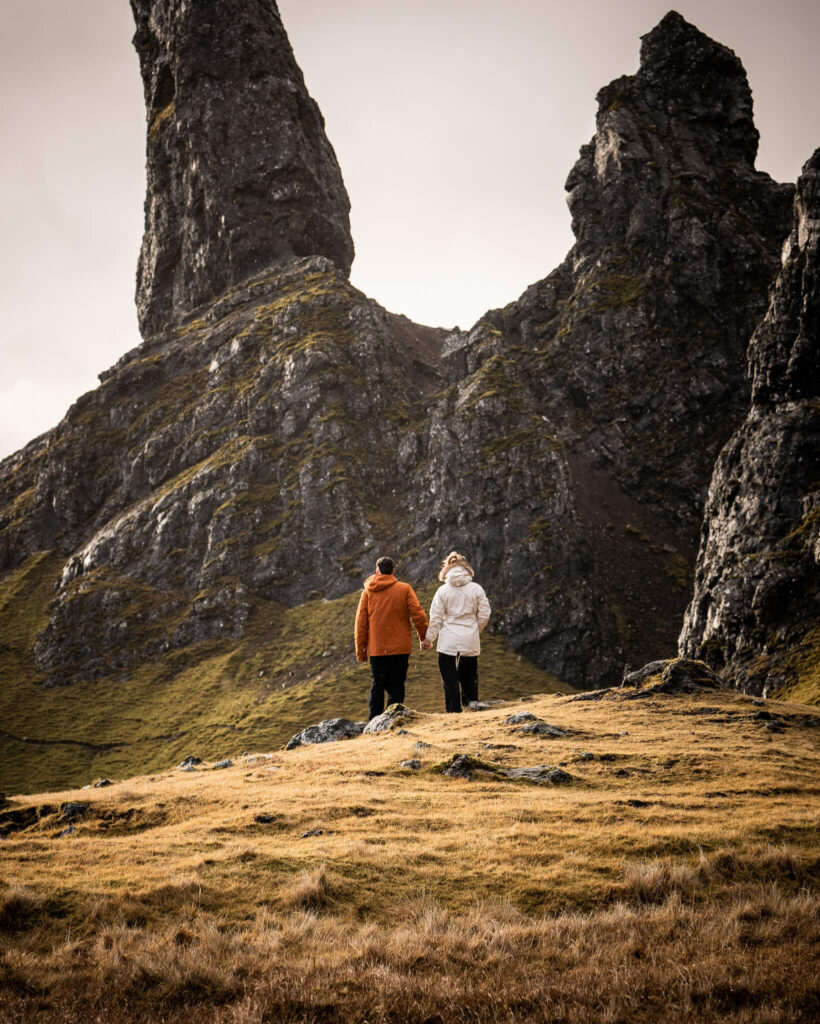
Is the North Coast 500 worth it?
Whether or not the North Coast 500 is worth it depends on what you are looking for in a road trip. If you love stunning scenery, peaceful beaches, and quaint Scottish towns, then the NC500 is definitely worth it. The route takes you through some of the most beautiful landscapes in Scotland, including the rugged coastline, stunning lochs, and breathtaking mountains.
One of the biggest draws of the NC500 is the opportunity to explore the Highlands, which are known for their wild beauty and rich history. You can visit ancient castles, walk in the footsteps of Scottish clans, and discover charming villages along the way. The route is also known for its abundant wildlife, including deer, otters, seals, and eagles.
However, it is important to note that the NC500 is not for everyone. The roads can be narrow and winding, and the weather can be unpredictable. Additionally, some parts of the route can be quite remote, which may not suit everyone’s preferences.
That being said, if you are up for a bit of adventure and want to experience the natural beauty of Scotland, then the NC500 is definitely worth considering. It is an incredible journey that will leave you with unforgettable memories and a deep appreciation for Scotland’s rugged beauty.
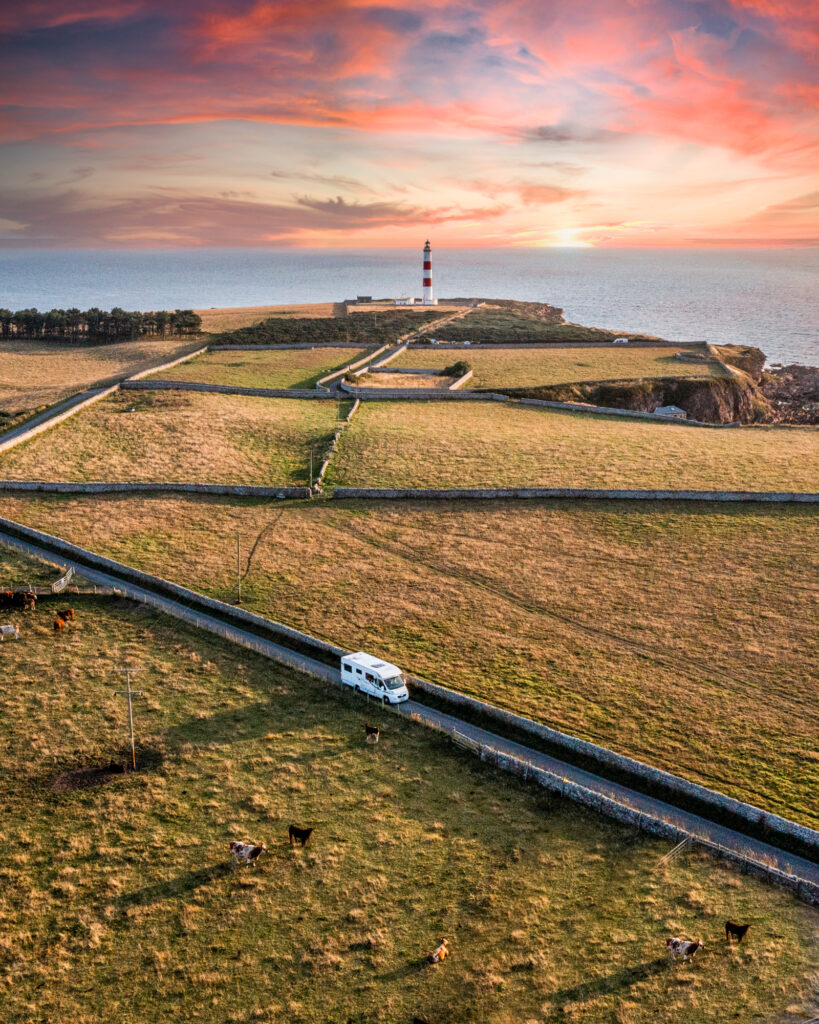
Before You Leave on the North Coast 500
Before you head off on your trip around the NC500, there are certain things you will need to get organised to ensure a smooth trip. These include how to get around the route, including being aware of single track roads, etc., what to pack for Scotland, where to stay along the route and what travel insurance to book.
How Do I Get Around?
Given the remote location of the NC500 and the majority of the sights along the route, the best way to get around this road trip is by driving. There are of course other methods that are still popular, such as cycling and hiking, however, if you have a short amount of time on the route, neither of these are very suitable.
As for public transport, the use around the NC500 is understandably difficult due to how remote each location is, however, with the increasing problem of congestion along the route, this is a good option to research if you have time. If it is something that interests you, you can read a public formed itinerary of how to get around the NC500 by public transport over here.
If you are looking to rent a cosy, reliable and luxurious campervan for your trip along the NC500, we recommend hiring through Spaceships Rentals.
Browse the full range of vehicles on offer at Spaceships over here.
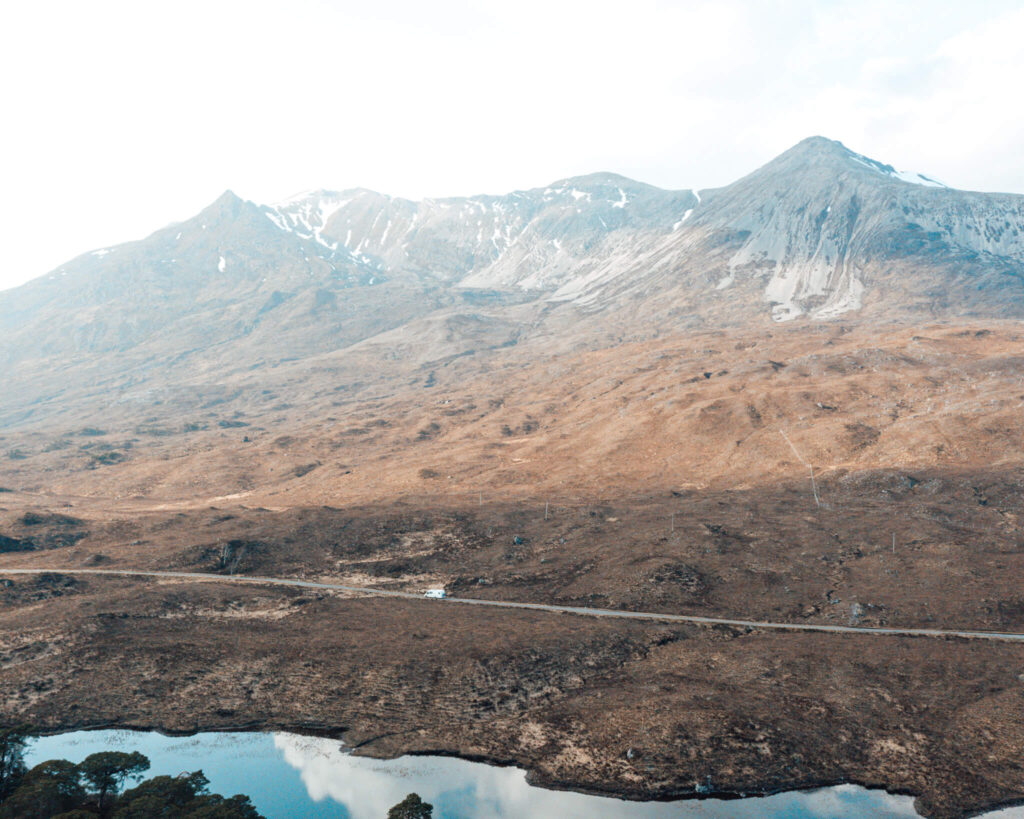
Where to Stay on the NC500
There is a wide range of accommodations around the NC500 route, so you will not be short on options. Depending on how long you are spending in each area will depend on how long you spend in that location. It is worth bearing in mind that some accommodations will require you to stay a minimum number of nights so it is worth researching this when you are planning your North Coast 500 itinerary.
Our new book North Coast 500 Where to Eat and Stay shares the best places to eat and stay around the NC500 and includes whether places are dog friendly, accessible, have wifi and EVC ad whether they cater to dietry requirements.
The remoteness in the highlands of Scotland will leave you with little choice of accommodation in each location along the NC500, however, there are still enough options to choose from to ensure a comfortable trip. These are mostly in the shape of B&Bs, Airbnbs, converted cottages and other quirky accommodations.
Depending on how adventurous you are, there may be more accommodation choices than just the above, often with an even better view. Caravan and camping sites are abundant along the NC500, drawing camping enthusiasts from all over the world. For some of the most spectacular bedside scenery along the North Coast 500, we recommend packing a tent and getting in touch with nature for the week.
As we travelled along the North Coast 500, camped in our trusty Vango tent on a mixture of campsites and wild sites. Wild camping is a fantastic way to enjoy the beauty of the highlands, however, it must be done respectfully. Read our full guide to Wild Camping if you wish to give it a go so you know everything you need to for a comfortable and sustainable trip.

What Should I Pack?
When it comes to packing for a trip to Scotland there is one item of clothing that you are going to need all year round: a waterproof. It rains in Scotland on average 250 days a year, meaning that during your 5-day Heart 200 road trip you will probably experience at least a drizzle of rain. Due to this, the number one item on any Scotland packing list is a good waterproof jacket.
As for the rest of the year, the temperature in Scotland and the central heartlands is reasonably mild for most of the year. During the winter months, you will most likely experience snow, however, temperatures usually sit around freezing, so it is not too cold. For your reference, the average temperatures in Scotland are listed below during each season.
Spring (March, April, May) – 5-10 degrees C
Summer (June, July, August) – 15 degrees C
Autumn (September, October, November) – 5-10 degrees C
Winter (December, January, February) – 0-5 degrees C
As you can see, the weather never really gets above the teens, with anything over 25 degrees C considered a heatwave. The best way to pack for your trip to the highlands is with layers that can be added and removed as you need them. You will definitely need a hat and gloves during the colder months and will most likely need sunscreen to protect you on the long days in the open.
It is also important to stay hydrated, especially when you are out exploring in the marvellous landscape of Scotland. We use Water to Go water bottles to fill up with water from running streams when we are hiking.
We would also recommend taking our NC500 guidebooks with you on your journey. This will help you plan your itinerary and ensure that you don’t miss out on any of the best places to go on the NC500. Our Destination NC500 guidebook is well paired with NC500 Where to Eat and Stay and you can buy the combo here.
Given the beautiful sights and scenery that you are no doubt going to see around Scotland, we highly recommend packing a good camera for your trip. If you want to read more about the cameras we use and why we love them, check out the link below.
Photography Equipment
Main Photography Camera – Sony A7v Mirrorless Camera and Sony A7iii Mirrorless Camera
Microphone – Sony Mic ECM-B1M
Main Lens – Tamron 17-28mm f/2.8
Zoom Lens – Tamron 70-180mm f/2.8
Camera Tripod – ZOMEI Z669C Camera Tripod
Gorilla Pod – JOBY JB01507-BWW GorillaPod
Action Camera – GoPro Hero 11 and Insta 360 One RS
Drone Camera – DJI Mavic Pro 3
Camera Bag – Wandrd PRVKE 41L and The Nest by Tropicfeel
Phone Tripod – Manfrotto MKPIXICLAMP-BK, Mini Tripod with Universal Smartphone Clamp
Sturdy Phone Tripod & Selfie Stick – ATUMTEK 61″ Selfie Stick Tripod, Sturdy Phone Tripod Stand with Wireless Remote
Hard Drives – LaCie Rugged Mini, 5TB, 2.5″, Portable External Hard Drive
SSD – SanDisk Extreme Pro 1TB Portable NVMe SSD
Travel Adapter –Worldwide Travel Adapter Universal Travel Plug with 4 USB Ports+Universal AC Socke
What is the Best Travel Insurance for the North Coast 500
I know travel insurance is the least enjoyable thing to purchase and look at when you’re planning a trip, however, you wouldn’t want to be without it in the event that something happened. Accidents can happen anywhere and the extortionate medical bills will ruin your trip if you are not covered.
To ensure you have a stress-free trip with no worries about potential medical bills, make sure you cover yourself when you travel. We can recommend using SafetyWing, a backpacker-friendly and cheap insurance company that provides good coverage and support. It is also nomad-friendly, unlike most other insurance companies, meaning you do not need to worry about being out of your home country for too long.
Get a quote for your travel insurance right here and get covered!
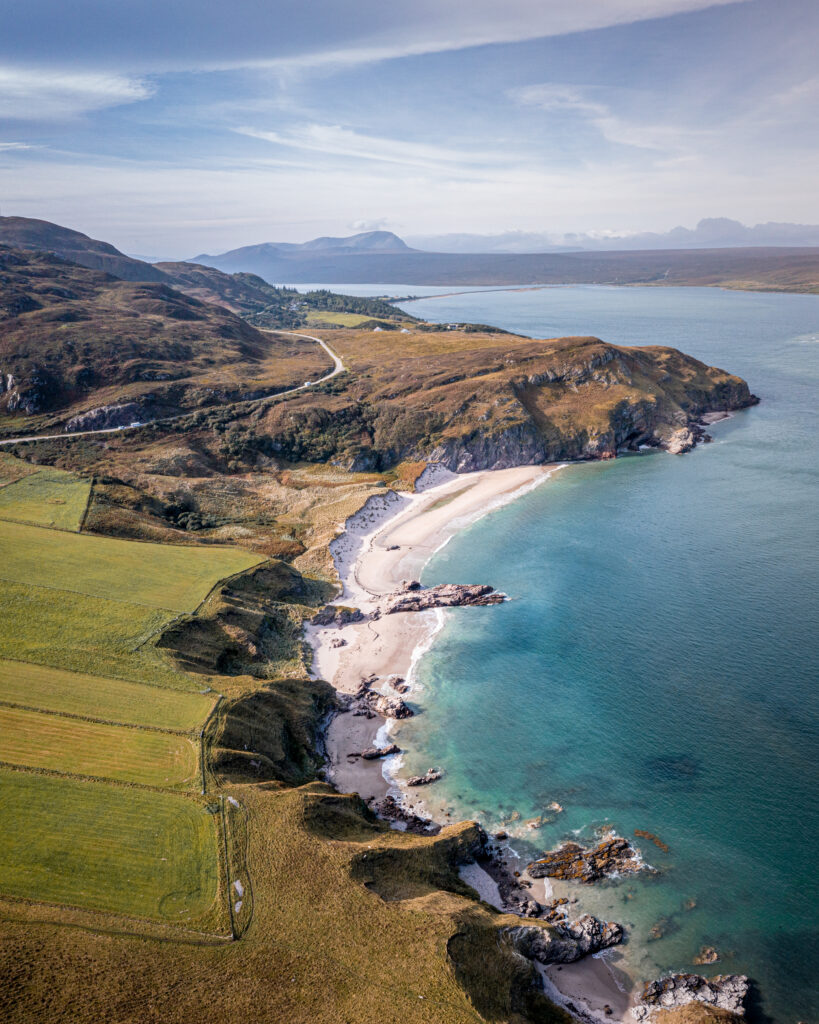
So there you have it, all of your questions answered on the North Coast 500. If you have visited the NC500 recently, let us know what you thought of the sights listed above, or if you have any suggestions let us know in the comments below.
As always, sharing is caring so make sure to share this guide with your family and friends and inspire them to head off on their own North Coast 500 adventure. If you are planning the trip for yourself, make sure you have a look at the rest of our Scotland content for more inspiration to our beautiful home country.
When you set off on your own adventure, be sure to tag us in your photos on Instagram and we will share them with the rest of our community. In the meantime, why not follow us over there to see what we are currently up to and keep up with us on our Instagram Stories.
Now Read:
This article may contain affiliate links that provide us with a small income. For more information read our Affiliate page.
Pin it for later!
